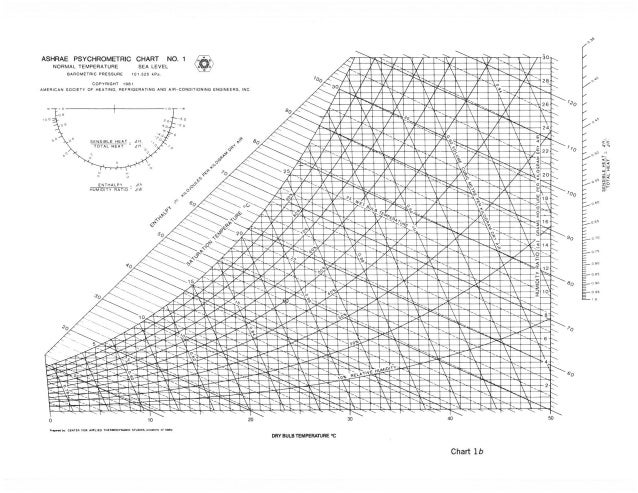
A steam humidifier will produce a small amount of sensible heating since the higher temperature of the device (the tube) carrying the steam into the air will increase the temperature of the air and there will be a very slight sensible heating effect from the steam itself. The process that would typically result from a steam humidifier (almost pure latent heating) is indicated in Figure 4 – it can reasonably be considered as a vertical line following a constant dry-bulb temperature. The term ‘bypass factor’ is sometimes used and is simply (1 – contact factor). This is commonly combined in the term known as ‘contact factor’, β – where the contact factor is a measure of how close the air will get to the coil ADP and can be seen as the fraction of the distance between points A and X of the distance A to B ie: contact factor = AB/AX.īy virtue of the way that ‘similar triangles’ work AB/AX = (g A – g B)/ (g A – g X) = (θ A – θ B)/ (θ A – θ X). This will relate such parameters as the number and shape of coil rows, the spacing and type of fins on the coil, and the air velocity. How close the dry-bulb temperature of point B approaches the ADP will depend on the effectiveness of the cooling coil. This combined process will produce an off coil temperature somewhat higher than that of the actual temperature of the coil (known as the Apparatus Dew Point, ADP and shown as point X on Figure 5). However ‘combined’ latent and sensible cooling will regularly take place in the same piece of equipment – for example in a cooling coil that has a surface temperature below the dew-point temperature of the incoming air. In HVAC it is unlikely that a simple ‘latent’ only cooling process will be present.

For a cooling coil to provide sensible cooling only (and no latent cooling) the coil surface temperature must be greater than the dew-point temperature of the air. The opposite process, sensible cooling, is shown in Figure 3. This may be achieved, for example, with a heater battery made up from rows of hot water or steam coils, or electric resistance heaters or as the result of some heat recovery mechanism (such as a flat plate heat recovery device). The lines that join the start and end points on ‘real world’ processes that include latent heat transfer may curve however, for HVAC analysis it is normally just the start and end points that are important. When using the Psychrometric Chart for plotting cycles that include both latent and sensible change the individual processes are simplified to straight lines. The energy contained in the air (as indicated by Enthalpy, h) relating to both the sensible and latent energy increases towards the right and the top of the chart as each of dry-bulb temperature and moisture content increase. Sensible heat is that added to, (or taken from), moist air without a change in moisture content and latent heat is that added to, (or taken from), moist air without a change of dry bulb temperature. When lines are drawn on the chart they reflect changes in sensible heat or latent heat or a combination of the two. A photo-enlarged chart (or a specific area from the chart produced by computer software) will improve the resolution.

When considering whole processes on a standard CIBSE Psychrometric chart (particularly when considering ‘summer’ cycles) the individual process lines can be quite tightly bunched and difficult to discriminate. When illustrating the air condition in a project or job notes it might be clearer to refer to a printed chart (possibly conveniently plastic coated and reusable) to read off the data and then convert that into a sketch similar to that shown in the figure where the data and processes are not lost in the plethora of printed lines. The outline of the chart is as shown in Figure 1 and it may be used for individual rooms or processes as well as describing the changes to properties that take place in a complete air handling system. If sending in the tear-out page from the magazine, just write in one of these options under question one. Please note that the options for this question are: A. The version of this module in the October edition of CIBSE Journal omitted the options for question one.


 0 kommentar(er)
0 kommentar(er)
